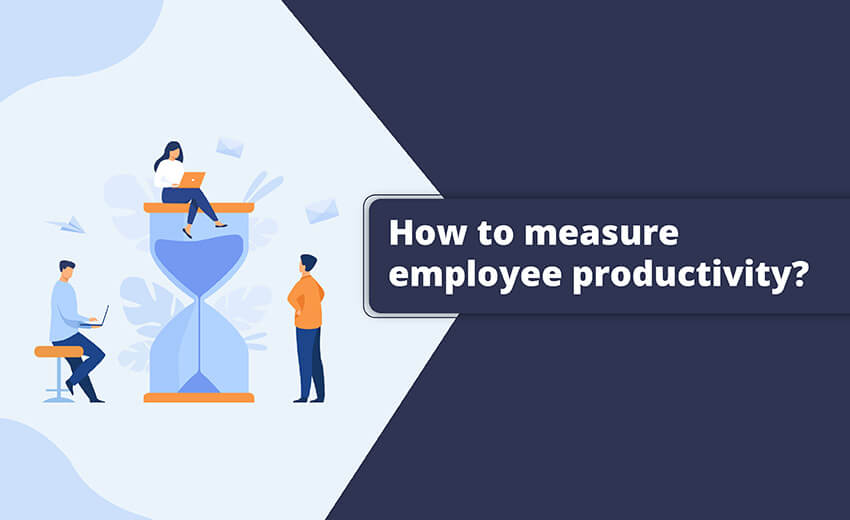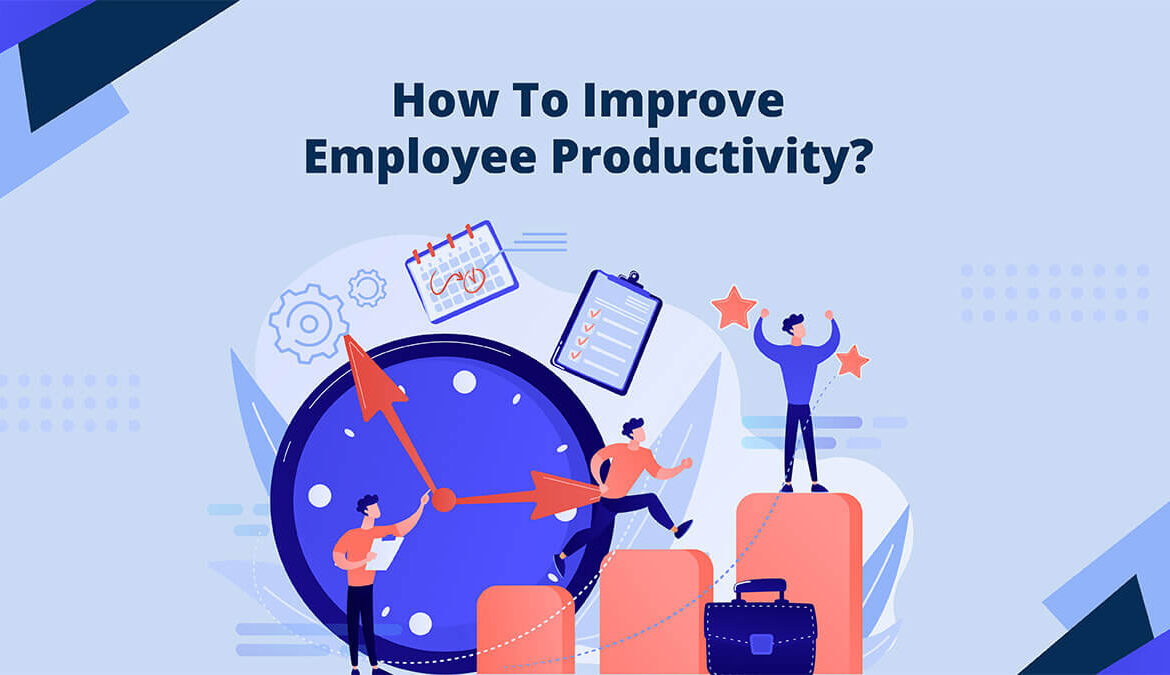In the current competitive business landscape, it has become more important than ever to harness the full potential of your workforce. Employee productivity is not a buzzword. It is the cornerstone of a thriving, successful organization. Imagine a workplace where every member is contributing to ideas, where tasks are getting accomplished efficiently, and where innovation flourishes at every step. This may seem like a distant dream, but it isn’t. It is a tangible reality that you can create by implementing the right strategies.
Increasing employee productivity is more about embarking on a transformative quest to not just increase the output from your teams but also to empower your employees to shine in their respective roles. After all, a truly productive workplace isn’t built overnight, it is more of a continuous journey towards excellence.
In this guide, we delve into the art and science of optimizing productivity at the workplace. Learn how open communication, skill development, and innovative, modern tools can synergize to unlock productivity levels that you would have never imagined.
What is employee productivity?
Employee productivity is a measure of how a workforce effectively and efficiently produces output, completes tasks, and achieves goals within a given timeframe. It is an important metric for organizations to measure the performance and contribution of the workforce to the overall business objectives. Productive employees are those who can accomplish more tasks of higher quality in less timeframe thereby maximizing the value they add to the organization.
Productivity is not about working for longer hours. it is about optimizing the tasks for achieving better results. A lot goes into achieving this such as proper training, clear communication, creating a conducive work environment, and providing access to tools and resources. A healthy work-life balance is also a crucial factor that contributes to enhanced productivity levels.
Employee productivity is a key driver of an organization’s success. When employees are productive, it results in higher efficiency, higher profitability, and a more engaged and satisfied workforce.
Factors Affecting Employee Productivity
There are a multitude of factors that can affect employee productivity. This can be both external and internal to the workplace. A better understanding of these factors is crucial for organizations aiming to enhance the efficiency and output of their workforce. Here are some key factors impacting employee productivity and strategies you need to follow to address them effectively.
- Work environment – The physical workspace conditions such as the lighting, comfort, and overall atmosphere play a significant role in productivity. A comfortable, well-designed environment helps you boost motivation and focus on the workforce.
-
Setting clear goals and expectations – An important step in boosting employee productivity is to set clear goals and expectations. Employees need to understand their roles and responsibilities clearly. Ambiguity and uncertainty can result in confusion thereby bringing down productivity at the workplace.
When your employees understand their roles, responsibilities, and objectives, they are better equipped to focus their efforts and prioritize tasks at work. So, clearly communicate both short-term and long-term goals as this provides the employees with a sense of purpose and direction. It also motivates them to work more efficiently towards those goals. - Workload and time management – An overwhelming workload can result in burnout and bring down efficiency at the workplace. Realistic task distribution and effective management skills are essential in preventing ambiguity.
-
Open communication – Open and transparent communication channels foster clarity and easy collaboration. Lack of communication can result in misunderstandings and delays in completing the project. Effective communication and feedback stem from good collaboration. Productivity-rich teamwork never happens by accident. You and your team need to put an effort towards becoming an effective team.
You can begin with hosting casual get-togethers from time to time. Initiate employee outings, throw an office party, or organize team-building games. Whenever new employees arrive, make sure they feel welcome in the workplace and gel with their colleagues. Find ideal means of communication. Your company may use email, phones, or any other tool for engaging in office communication. However, you need to spend time understanding how each employee replies best. Some may be quick to respond to Slack messages and some prefer giving prompt replies while answering their phones. - Tools and technology – Inadequate and outdated tools can slow down work processes. This can result in frustrated employees and hence delayed project execution. If you want to foster productivity in the workspace, then you need to make sure that you equip your employees with the right tools and resources. Outdated and inadequate equipment and software can result in frustration and bring down performance. Organizations need to invest in the right tools and technologies that help employees perform better and take their tasks more seriously. Whether it requires investing in upgraded hardware or advanced software, you need to make sure that you equip your employees with the right set of resources to demonstrate commitment to their well-being.
-
Training – Your team will be productive and motivated when they are constantly learning new things and have relevant skills to flourish in their careers. Hence, it is vital to provide time for your team to upskill themselves. Create a library of training resources in every field so that you have a successful team onboard. Create modules for new joiners to understand the nitty-gritty of how your team works. Investing in the right project management tools can help you with it.
By presenting learning opportunities to your employees, you are giving them a chance to develop new skills and expand their knowledge. This can include companies offering employee development and internal cross-training. Also, companies can provide tuition assistance to employees to further their education. By investing in growth and providing opportunities for career advancement and skill development, you are demonstrating your commitment to the professional success of your employees.
How to increase employee productivity at the workplace?
Employee productivity is the key to success for any business. By taking the necessary steps to boost productivity, you will not just drive profits but will also create a better working environment. Here is what you can do to manage your employees on a daily basis. These simple strategies will make a massive difference in your workspace.
-
Building a positive work environment
When you focus on building a positive work environment, you are in turn boosting the productivity of employees at the workplace. When your employees feel respected and valued, they will more likely immersed in their work. Hence, by shifting your focus towards encouraging open and honest communication and by rewarding the progress of your employees, you contribute to a positive work atmosphere in place. -
Allow flexible schedules
Different people have different productivity peak times during the day. Sticking to a strict 9-to-5 schedule may not work for everyone. Making hours flexible can work wonders to increase employee productivity. Instead of working for 8 hours continuously in a day, you need to let your employees work in two smaller time blocks. You can let them clock in to work from 7 a.m. to 1 p.m. and complete the rest of the work from 3 p.m. to 5 p.m. The gap in between will let them have lunch go to the gym or complete other tasks for the day. This will help them become more productive and efficient. That long and fulfilling 2-hour break will help your employees feel more efficient and productive and avoid the dreaded afternoon slump that the employees feel before the closing time.
Despite the challenges, allowing remote work helps employees be more productive outside of the office. You can allow select positions to work remotely. By clearly defining the availability hours, defining specific response times, and giving clear instructions to remote workers to log their time, you can keep a tab on their performance. -
Stop micromanagement in delegating tasks
Task delegation is directly linked to productivity. However, managers sometimes cannot let go of tasks they have assigned to others. Hence, they tend to micromanage every detail rendering delegation pointless. Moreover, over 85 percent of employees feel demoralized with micromanagement. They perform subpar with constant supervision as they lose faith in their abilities.
If you are looking for a specific outcome, you need to learn to manage requirements and expectations instead. Provide specific guidelines and let your employees learn what you are expecting from them. Not well-meaning task requirements will lead to the right task expectations. You will have less to worry about and micromanage if your employees are more focused on their goals rather than on the means of getting there.
Make your employees feel more relaxed and independent once you have delegated the tasks. They will feel more confident in their skills if there isn’t a supervisor looming constantly over their heads. -
Encouraging self-care
You need to encourage your employees to take good care of themselves. This goes a long way in encouraging employees to care about their projects and tasks. Make sure the employees are aware of all the health benefits the company offers and make sure to encourage them to take vaccinations, complete full-physical exams and take care of other benefits.
You can make your employees sign up for time management and stress-relief courses. This will help them alleviate everyday stress and manage their time better. Make sure to recognize employee accomplishments. If you address your employees only when you feel the need to point out mistakes in their work, then this isn’t a productive practice. Employees love it when their hard work is appreciated. 79 percent of professionals quit their jobs due to a lack of appreciation at the workplace. Such a gesture helps them lift their confidence. Hence, take time to highlight people’s strong points and achievements when you can. -
Implement performance measurement and feedback
Measuring employee productivity requires objective metrics. By implementing key performance indicators (KPIs) relevant to each role, you can assess productivity effectively. Constructive feedback sessions and performance evaluations enable employees to understand their strengths and areas for improvement. Constructive feedback empowers employees to align their efforts with organizational goals and make necessary adjustments to their work practices. -
Rewarding achievements
It is essential to recognize and reward achievements. This can have a profound impact on boosting productivity and motivating your employees. Whenever employees feel that their hard work and dedication are appreciated and acknowledged, they are more likely to go the extra mile. Rewards could be in any form such as promotions, monetary incentives, public recognition, or simple gestures of appreciation. Tailoring rewards to suit individual preferences naturally enhances their effectiveness. -
Improve employee onboarding
Several employers still work on the mindset that once a contract has been signed; they have the loyalty of their new employees. This traditional work mentality is no longer applicable to the talent of a new generation. It takes an effective onboarding program to integrate the employees successfully into the company culture. Research led by Brandon Hall Group found that organizations with a strong onboarding process improve new hire retention rate by percent and productivity by over 70 percent.
The basic elements of effective onboarding comprise extensive training, hands-on support, feedback, and check-ins. You can also utilize the company intranet to make it quick and easy for employees to learn more about their new colleagues as possible. Use employee recognition software. This helps create a positive working environment which in turn will improve wellbeing and increase productivity and collaboration at the workplace. -
Hire people, not their CVs
It can be easy to get caught up in a traditional and outdated hiring process where you just look for good education and relevant job experience. There is another criterion that most employees miss during the hiring. It is a cultural fit. Hiring for culture fit is all about bringing employees into the company whose behavior, beliefs, and values align with your organization. Communicating your company’s culture from the start helps a candidate understand what they can expect as an employee so that they can make informed decisions while accepting the job offer. If you don’t follow this as a part of your hiring strategy, then the employees are more likely to leave the company or be unproductive resulting in a conflict in your workplace -
Ask for employee feedback
Employee feedback is crucial for management to improve their communication and internal communications strategy. Hence, having a survey that employees can fill out on the intranet is vital. Management needs to get the feedback it needs collaboratively and concisely. . -
Linking company culture and productivity
Company culture is all about the beliefs, shared values, behaviors, and practices that define an organization and its identity in the corporate world. A robust culture would always align the employees with the mission of an organization thereby establishing a sense of belonging. By cultivating company culture strategically, it can inspire individuals to collaborate and excel resulting in heightened productivity levels.
In the pursuit of achieving optimal employee productivity, company culture is often overlooked. A positive and strong company culture can prove to be a catalyst for enhanced motivation, efficiency, and overall performance of the employees.
How to measure employee productivity?
There are many ways to measure employee productivity. The best method for your company will depend on the specific goals and objectives of your business, as well as the nature of the work that your employees do.
Here are some of the most common methods for measuring employee productivity:

Quantitative Methods: Quantitative methods gauge employee output in measurable terms, such as units produced, or revenue generated. Common quantitative methods include:
-
Output per hour
This metric quantifies the number of units produced or tasks completed by an employee within an hour -
Revenue per employee
This measure assesses the amount of revenue generated per employee -
Cost per unit
This metric calculates the cost associated with producing each unit of output. -
Time to market
This gauge tracks the duration it takes to introduce a new product or service to the market. -
Customer satisfaction
This metric quantifies the level of satisfaction among customers regarding the products or services they receive.
-
Employee surveys
Surveys gather data on employee satisfaction, morale, and motivation, helping identify productivity influencers -
Manager observations
Managers observe work habits and performance to better understand productivity levels. -
Peer feedback
Colleagues' feedback can evaluate the quality of employees' work and identify areas for improvement. -
Project reviews
Assessing project success helps pinpoint opportunities for enhancements.
Additional Tips for Measuring Employee Productivity:
-
Set Clear Goals
Define what you want to measure and specify the metrics to be used. -
Consistent Data Collection
Collect data consistently over time to identify trends in employee productivity. -
Benchmarking
Compare your data against industry benchmarks to gauge employee performance relative to peers in similar roles. -
Identify Improvement Areas
Use the data to pinpoint areas where productivity can be enhanced. -
Regular Communication
Maintain regular communication with employees about their productivity, helping them understand their performance and areas for improvement.
How MeraMonitor can help increase employee productivity?
At MeraMonitor, we believe that time is your most valuable asset, and optimizing its usage is crucial for your team’s success. We are passionate about empowering businesses like yours with our state-of-the-art employee activity monitoring software. Our platform is designed to boost employees’ productivity and drive exceptional results. Here are just a few reasons why the MeraMonitor employee monitoring is a great choice for your team.
Increased Productivity: With Mera Monitor, managers can identify time-wasting activities, provide feedback, and encourage better work habits, ultimately boosting productivity across the organization.
Transparent Performance Evaluation: Mera Monitor provides objective data for performance evaluations, ensuring fairness and helping employees understand their strengths and areas for improvement.
Maximize business efficiency: Obtain accurate project insights to enhance profitability and optimize resource allocation. Stay informed about project performance, minimizing potential losses and driving success.
Remote Work Management: Manage remote teams with ease using MeraMonitor. Keep your remote workforce accountable, ensuring productivity no matter where they work.
 Gift Card ₹999
Gift Card ₹999


